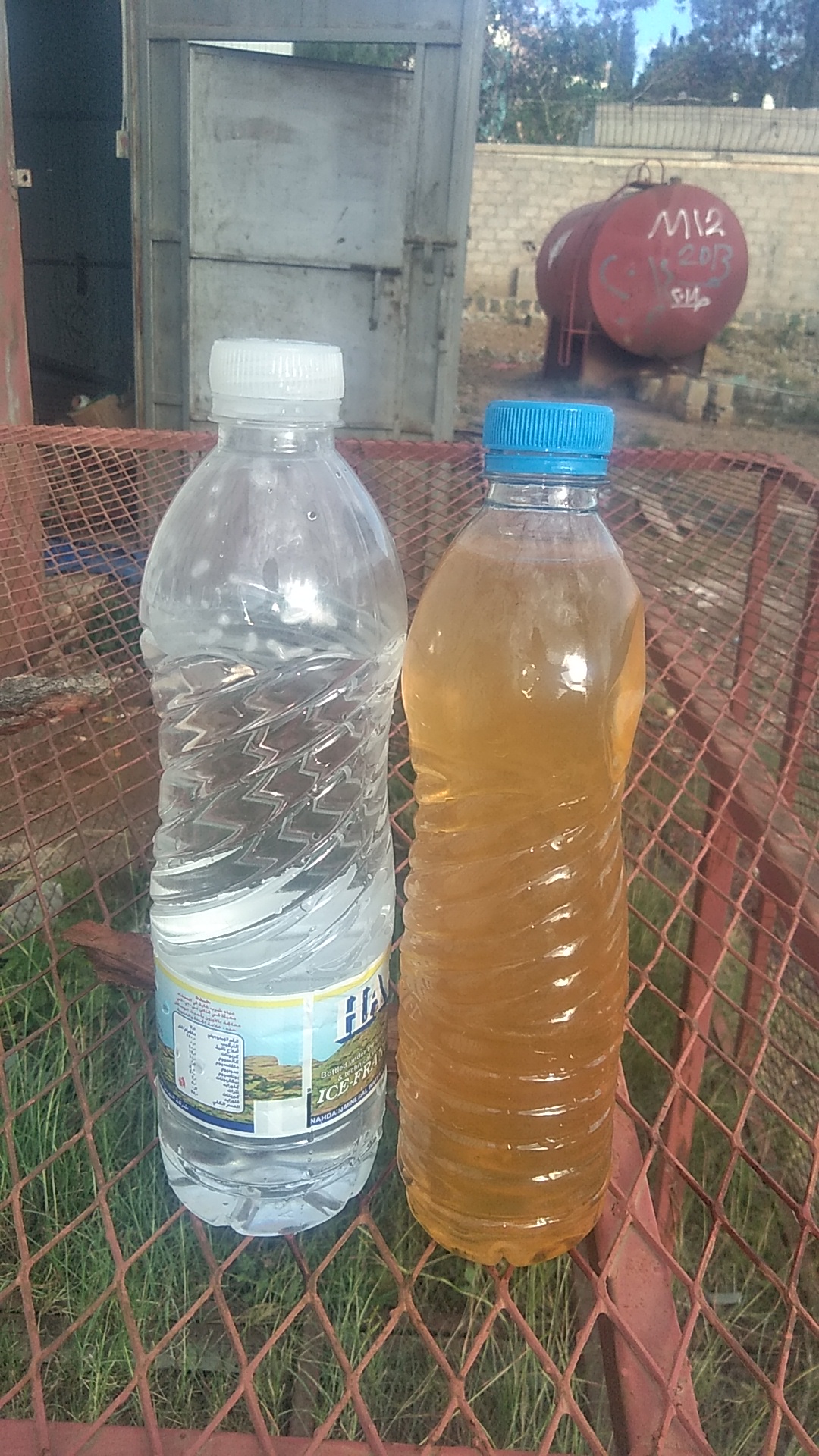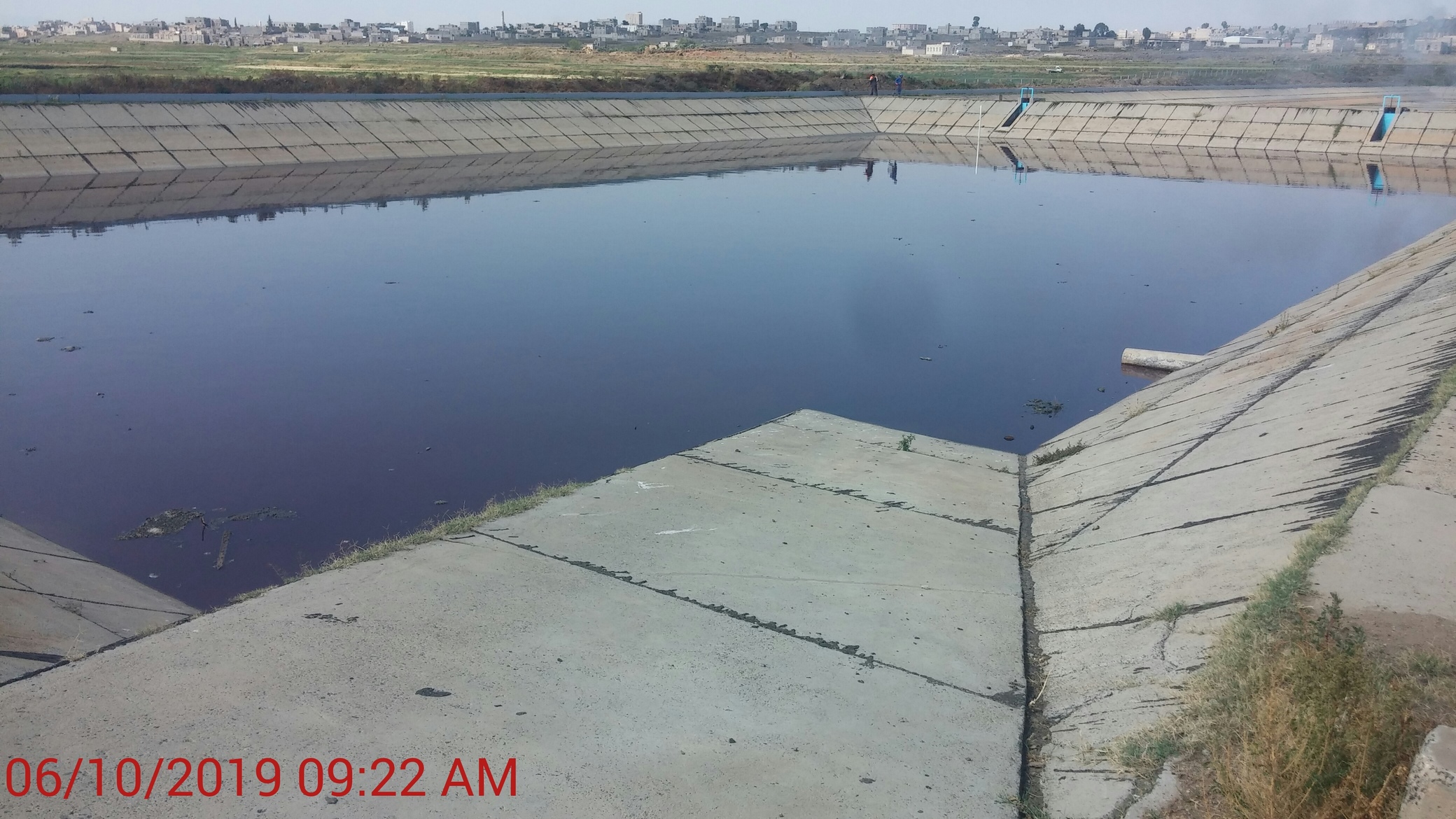
Water quality improvement
This practice concerns improving the water quality that is deteriorating due to falling water tables with water from greater depths having higher iron content or salinity levels. Sana’a LC already had experience with involving the private sector in operating iron removal plants, but due to the war they had to train their own staff to take care of this. Another case is Hodeidah LC which was facing water quality problems due to increasing salinity. They keep operating the wells with higher salinity but reduce the level by mixing it with water with lower salinity levels to reach an acceptable water quality.
Description of the problem
Yemen faces great challenges in relation to the quality of drinking water. One very important problem is that in many places water tables are falling due to over pumping of groundwater. Abstracting water from greater depths often results in serious deterioration of the water quality. For example, in the Sana’a Basin, several wells have reached such high iron concentrations that the water does not meet water quality standards and is not acceptable to customers (Figure 19). The problem is growing and the utility was forced to suspend the use of several wells due to high iron concentrations, causing reduction in water production and service levels. Sana’a LC already had experience with commissioning the private sector to install and operate iron removal units in five wells with a production of 4,000 m3 per day of good quality water. Because of the war and the reduction in revenues, the utility no longer could pay the private sector for this work.
Another water quality problem due to falling water tables concerns the case of Hodeidah LC. Several of their wells faced increasing levels of salinity making the water no longer acceptable for the consumers. Fortunately this problem does not occur in all of their wells and several have still a low level of salinity.
Description of the good practice
It is necessary for water utilities to solve water quality problems that result from the lowering water tables in different wells in Yemen. The first practice concerns iron removal by Sana’a LC. Initially the utility obtained assistance from the private sector to treat the high iron concentrations in some of their wells, with the private company installing and operating eight iron removal units (Figure 20). However due to a severe reduction in revenues the contract had to be cancelled and the utility decided to set-up its own team to take charge of the iron removal systems. The utility trained its staff, purchased equipment and restored and increased the iron treatment units with a capacity of in total 5,200 m3 per day.
As part of the process they replaced the filament textiles filters (cotton type) with sand filters as the latter are more efficient and more cost-effective in maintenance. The team installed pre-chlorination injectors with a mixer to support the oxidation of the iron and improve the removal process. A second chlorination unit was installed after the filtration process to disinfect the treated water. The team also installed additional centrifugal pumps and improved the electrical protection system.
Reinstating the treatment of wells with high iron concentrations, increased the production capacity and enhanced the utility revenues. For example, the Habra well in Sana’a is again in operation after ten-year suspension, producing 1200 m3 per day.
In the case of the salinity problem of Hodeidah LC, the utility addressed this water quality problem in a different way. Instead of trying to reduce the salinity trough water treatment using for example reverse osmosis, they opted for the mixing of saline water from some of the wells with water with low salinity levels from other wells, to meet the desired water quantity with acceptable water quality.
Impact of and sustainability of the good practice
The effective response to groundwater quality deterioration is of vital importance to water utilities in Yemen. Treating the water to reduce the iron content has an important impact as it makes an important volume of water available for distribution. So in this case the utility was able to provide more water to its consumers. Furthermore they were able to do this by strengthening the capacity of their own staff. The installation of additional iron removal units is envisaged with support from Unicef. A problem is that costs related to involving the private sector were higher than the revenues from the additional water that was produced. By making this an internal operation it appears that cost savings were made, but additional assessment is needed which also should take into account the need for a fair tariff to match production cost.
Sustainability in the long run is in a way uncertain as this depends in the first place on water resource management. If the water table keeps falling problems may become worse, hence an urgent need exists to quickly step up the protection of the water sources.
The approach to mixing water with high and low saline levels also has a positive impact as it is a low cost approach to keeping water available for distribution. However also in this case it is essential to improve water source protection and resources management to avoid larger problems in future.
Required resources
This approach requires in the first place that experienced staff is available (or will be trained) to operate and maintain the iron removal systems. In this case it was also required to install automatic chlorine injection equipment to support the iron removal process, and to replace the existing filter material with sand filters. A remaining question is whether the financial rate of return is sufficient to sustain the treatment process or would require a subsidy arrangement pending exploring options to adjust the tariff. In the case of Hodeidah LC, it was only necessary to make a connection with a well with lower salinity levels and design the right proportions from each well to be mixed in the utility reservoir.
Figure 19 Untreated source water with high iron concentration and treated water
Figure 20 Schematic of iron removal unit

